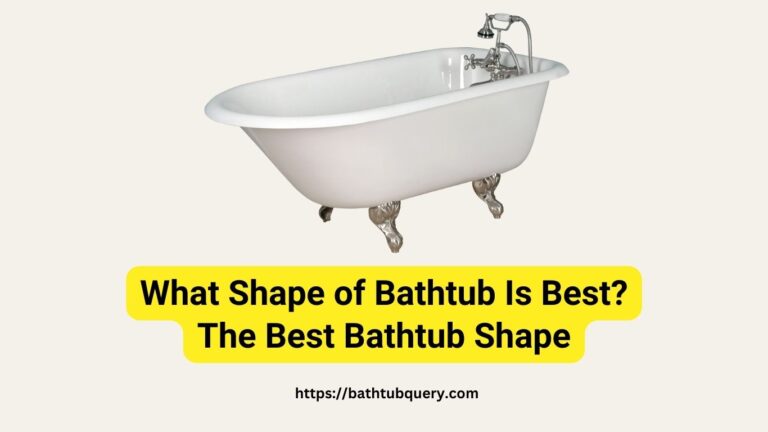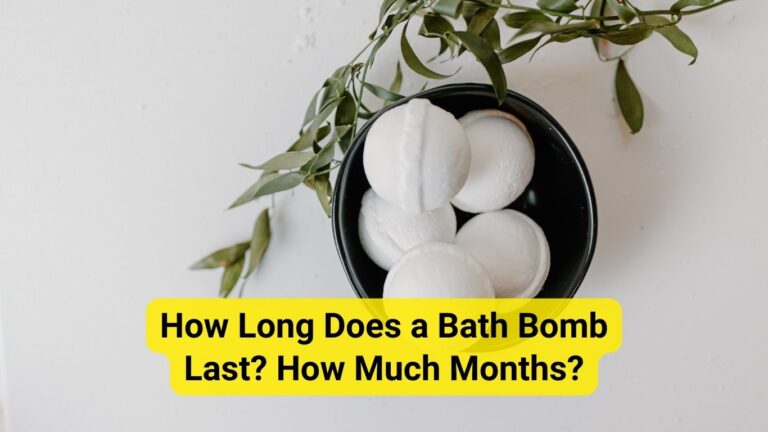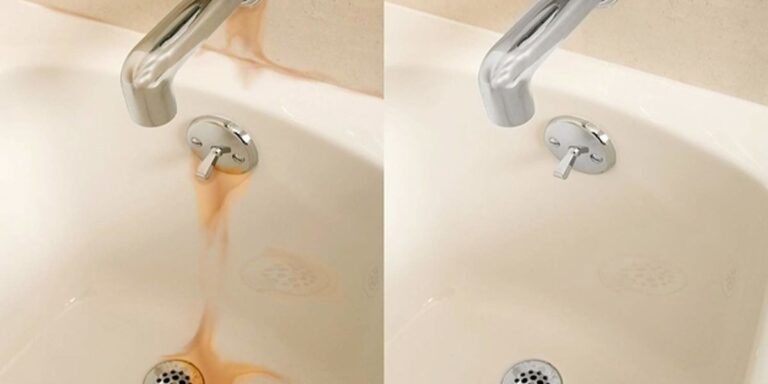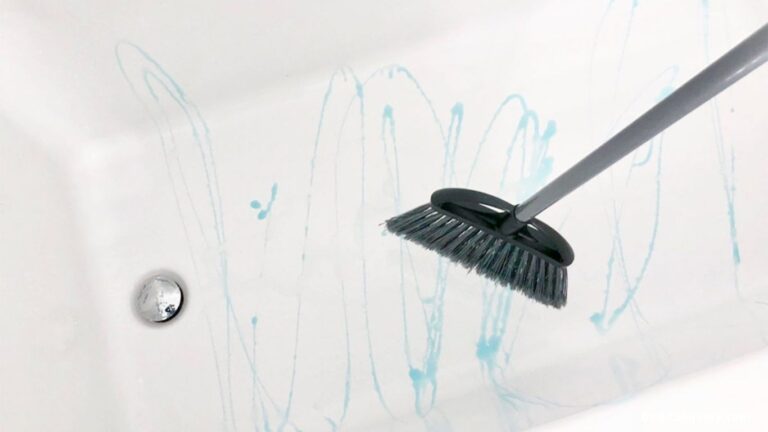How Much Is A Cast Iron Tub Worth In Scrap?
Cast iron tubs have been fixtures in bathrooms for over a century, prized for their durability, heat retention, and classic style. But when it comes time to remodel, you may be wondering – how much money can I get for scrapping my old cast iron tub? As a bathtub expert who has helped many homeowners through renovations over the years, let me walk you through the ins and outs of determining the scrap value of a cast iron tub.
Ultimately, a cast iron tub’s scrap value depends on several key factors like size, weight, condition, and current scrap prices in your area. The scrap payout you receive can vary widely, from as little as $30 to over $100 for a single tub. Before putting in the effort to remove and scrap an old tub, it’s important to have realistic expectations about the potential profit.
Size and Weight Are Key Factors
One of the most important factors in determining scrap value for a cast iron tub is its size and weight. Standard cast iron tubs range from 60 to 72 inches long, though some older or luxury tubs may be larger. The dry weight for a standard size tub is typically between 200 to 500 pounds.
Obviously, the bigger and heavier the tub, the more cast iron it contains, and the more it will be worth in terms of scrap metal. I learned this lesson first-hand a few years back when scrapping two vintage tubs from a home remodel project I was working on.
The first tub was a petite 60″ model weighing around 250 pounds. The second was a 6 foot behemoth, topping 500 pounds easy. As you can imagine, we netted a significantly higher payout for old Betsy, the giant of the two tubs.
So when estimating scrap value sight unseen, the size and weight of the tub can make a big difference. Ask the dimensions, get a rough dry weight if possible, and use those details to inform your scrap pricing estimates.
Check the Current Value of Scrap Cast Iron
In addition to size, the current market prices for scrap cast iron will also impact the value of your tub. Prices fluctuate regularly based on market demand, but generally scrapped cast iron fetches anywhere from 10 to 25 cents per pound.
To get an accurate idea of potential earnings, check the going rates at local scrap yards in your area. Online resources like iScrapApp are also handy for looking up real-time scrap prices. If cast iron is fetching on the low end, say 15 cents per pound, your payout will be lower than when prices are booming at 25 cents per pound.
Timing is important when scrapping – you ideally want to cash in when scrap demand and prices are high. When I scrapped my tubs back in 2018, cast iron was around 20 cents per pound. Today, prices in my area are down to around 12 to 15 cents per pound. If I were scrapping those same tubs today, the payout would be at least $50 less based on the market change.
Condition Greatly Affects Scrap Value
When dealing with scrap metal, condition counts. Heavily rusted, cracked, or otherwise damaged cast iron tubs have a lower scrap value than vintage tubs in good shape. Scrap yards are choosy, so they may reject tubs with excessive wear and tear or attempt to dock the per pound price if the tub is an eyesore.
Luckily, cast iron tubs often hold up remarkably well to the tests of time. I routinely encounter 50+ year old tubs with minimal rust and wear, despite decades of use. With a thorough cleaning to remove grime and surface rust, they can look nearly new again. For maximum scrap prices, take time to clean and shine up an antique tub before hauling it in. If the tub is structurally sound with no cracks or large patches of rust, it should fetch top dollar.
However, I have also seen 100 year old tubs so heavily rusted you could poke a finger through the metal. At a certain point, the flaking rust and corrosion will severely diminish the scrap value, even if it weighs a ton. Work to thoroughly assess the condition before assuming an old tub is scrap gold.
Removing and Transporting Tubs Takes Time and Labor
Before even considering scrapping a cast iron tub, understand that safe removal is backbreaking work that requires time and labor. Plumbing must be disconnected, tub surrounds demolished, and finally, the tub needs to be dislodged and extracted in one piece – no easy feat in tight bathrooms. Don’t underestimate this critical first step.
Depending on accessibility, I usually recommend people hire professional help for tub removal. But if you want to DIY, you need the right equipment. At a minimum, you need reciprocating saws, sledgehammers, pry bars, and sometimes even a dolly or appliance cart to finagle it out of the house. Don’t forget to protect floors and walls too.
In most cases, scrap yards require cast iron tubs to be cut into sections no larger than 2′ x 2′ for their scales and smelting equipment. This usually necessitates renting an angle grinder or hydraulic tub cutter – extremely hard tools to wield. Wear goggles and gloves, take your time, and focus on straight cuts for the best results.
Finally, you need a truck or trailer large enough to transport the tub sections, which could weigh 500+ pounds in total. For me, that meant renting a pickup to haul the two tubs to the scrap yard. Determine your transportation plan before committing to a DIY tub removal.
Finding the Right Local Scrap Yard
Not all scrap yards accept old cast iron tubs, so finding the right place is key to a smooth scraping experience. Start by searching online for “scrap metal recycling near me” and read up on sites that handle cast iron. Call ahead to confirm tubs are allowed and ask any questions about their policies.
In my area, larger full-service yards like ABC Metals Recycling or American Iron & Metal Co. are the best options. They have the equipment to efficiently weigh, process, and recycle heavy cast iron pieces. Smaller “we buy scrap metal” operations may not accept tubs at all.
Ideally, look for yards that offer scheduled pickup services for large items like tubs. For a fee, they bring a flatbed to your house, load up the tub sections, and then haul it directly to their facility – saving you time and heavy lifting. This is an extremely convenient option if it fits your budget.
Weighing and Calculating Your Scrap Payout
The magic moment comes when you arrive at the scrap yard with tub sections loaded and ready to weigh in. They will direct you where to unload the cast iron pieces so they can be weighed individually on truck scales. This provides the all-important tonnage number needed to calculate your payout.
For example, let’s say we have 300 pounds of cast iron tub sections. At the current rate of $0.15 per pound quoted by the yard, we would expect a payout of 300 x $0.15 = $45. Pretty straightforward math!
Now keep in mind, that some less scrupulous yards might try to knock off a few cents per pound for heavily rusted tubs or other arbitrary reasons. To avoid haggling, I recommend confirming the per pound pricing in writing upfront before hauling the tub in. Most reputable yards will honor the quoted cast iron prices without any fuss.
In the end, expect anywhere from $30 to $100 for a typical standard sized tub based on weight and market prices. Larger antique tubs could possibly yield over $100 if you luck out. While not a jackpot, this extra cash can be a nice perk to help offset part of the costs of your bathroom remodel project.
Is Scrapping Worth the Time and Effort?
After reading about the arduous process of removing, cleaning, cutting, and hauling an old cast iron tub, the natural question arises – is scrapping really worth it in the end?
The answer really depends on your specific scenario. For large ornate tubs, the potential payouts of over $100 make the effort more worthwhile. You also save money on disposal fees by scrapping it instead of junking.
But say you only net $40 for a standard tub after sweating through DIY removal. Considering the costs for equipment rentals, possible professional removal fees, and the many hours laboring, you may come out behind in the end.
My advice is to run the numbers for your particular tub and assess whether the time investment makes sense versus just paying a few hundred bucks for a disposal company to junk it. The scrap payout is highly variable, so focus on overall costs and benefits.
Alternative Uses for Cast Iron Tubs
Instead of scrapping that old tub for pocket change, also consider repurposing it instead! Cast iron tubs can have second lives as planters, fountain features, novel yard sculptures, pet watering troughs, and more with a little creativity.
Selling the vintage tub is another option, one that I have had success with. There is a growing demand for antique tubs to be salvaged and restored for use in new bathrooms or vacation properties. Prices typically range $200 on the very low end to over $1000 for rare, ornate styles.
The DIY movement has also sparked interest in repurposing old tubs as unique soaker tubs. With some modifications, you can convert an old clawfoot into a relaxing spa tub.
So if you love the charm of your old cast iron tub, consider alternatives like selling, repurposing, or reusing it instead of resigning it to the metal recycling heap. You can give that grand old tub a new lease on life!
Key Takeaways on Cast Iron Tub Scrap Values
In summary, keep these key points in mind when deciding whether or not to scrap an old cast iron bathtub for cash:
- Size, weight, and condition greatly impact potential scrap value
- Check current local scrap prices for cast iron per pound
- Consider costs for removal, transportation, equipment rentals
- Research and find the right local scrap yard that accepts tubs
- Payouts typically range $30 to $100+ depending on tub weight
- May not be worth the effort compared to simply junking the tub
- Consider repurposing or selling the tub instead of scrapping
While cast iron tubs do have legitimate scrap value for their metal content, the payouts are highly variable and may not warrant the effort involved. Carefully assess the costs, benefits, and logistics first before attempting to scrap an old tub on your own. With the right expectations and planning, you can hopefully recover some extra cash to make that bathroom remodel a bit more affordable.
I hope this overview gives you a better understanding of how to determine potential scrap value for old cast iron tubs. Please let me know if you need any clarification or have additional questions! I’m always happy to share my experience removing and scrapping vintage plumbing fixtures over the years. If you decide to tackle this project yourself, I wish you the best of luck!

William J. Bullock is a licensed plumber with over 15 years of experience installing and repairing bathtubs. He runs his own plumbing company in Greenville and serves residential and commercial clients. William is dedicated to providing honest, transparent advice to help homeowners make informed decisions about their bathroom renovations.
He has established expertise in selecting bathtubs, planning custom installations, diagnosing issues, and completing repairs. William aims to share practical tips and reliable recommendations based on extensive hands-on work. When he isn’t on a job site, William enjoys spending time with his family and volunteering at local community events. He takes pride in delivering quality service and enjoys helping people upgrade their homes.







